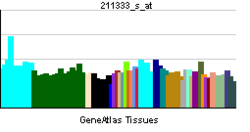
Kiosk
A kiosk (from Turkish köşk, from Persian kūshk) is a small, separated garden pavilion open on some or all sides. Kiosks were common in Persia, the Indian subcontinent, and in the Ottoman Empire from the 13th century onward. Today, there are many kiosks in and around the Topkapı Palace in Istanbul, and they are still a relatively common sight in Balkan states.
The word is now applied to small booths offering goods and services and to freestanding computer terminals.
Small shops
In the Western hemisphere and in English-speaking countries, a kiosk is also a booth with an open window on one side. Some vendors operate from kiosks (see mall kiosk), selling small, inexpensive consumables such as newspapers, magazines, lighters, street maps, cigarettes, Live and frozen bait and confections.
An information kiosk (or information booth) dispenses free information in the form of maps, pamphlets, and other literature, and/or advice offered by an attendant.
Interactive kiosks
An electronic kiosk (or computer kiosk or interactive kiosk) houses a computer terminal that often employs custom kiosk software designed to function while preventing users from accessing system functions. Indeed, kiosk mode describes such a mode of software operation. Computerized kiosks may store data locally, or retrieve it from a computer network. Some computer kiosks provide a free, informational public service, while others serve a commercial purpose (see mall kiosk). Touchscreens, trackballs, computer keyboards, and pushbuttons are all typical input devices for interactive computer kiosk. Touchscreen kiosks are commercially used as industrial appliances, reducing lines, eliminating paper, improving efficiency and service. Their uses are unlimited from refrigerators to airports, health clubs, movie theaters and libraries.

Interactive kiosk
An interactive kiosk is a computer terminal featuring specialized hardware and software designed within a public exhibit that provides access to information and applications for communication, commerce, entertainment, and education.
Early interactive kiosks sometimes resembled telephone booths, but can also be used while sitting on a bench or chair. Interactive kiosks are typically placed in high foot traffic settings such as hotel lobbies or airports.
Integration of technology allows kiosks to perform a wide range of functions, evolving into self-service kiosks. For example, kiosks may enable users to enter a public utility bill account number in order to perform an online transaction, or collect cash in exchange for merchandise. Customised components such as coin hoppers, bill acceptors, card readers and thermal printers enable kiosks to meet the owner's specialised needs.
History
The first self-service, interactive kiosk was developed in 1977 at the University of Illinois at Urbana-Champaign by a pre-med student, Murray Lappe. The content was created on the PLATO computer system and accessible by plasma touch screen interface. The plasma display panel was invented at the University of Illinois at Urbana-Champaign by Donald L. Bitzer. Lappe's kiosk, called The Plato Hotline allowed students and visitors to find movies, maps, directories, bus schedules, extracurricular activities and courses. When it debuted in the U of Illinois Student Union in April 1977, more than 30,000 students, teachers and visitors stood in line during its first 6 weeks, to try their hand at a "personal computer" for the first time.
Formal Approaches to Slavic Linguistics
FASL redirects here. For other uses, please see Fas ligand
The Annual Workshop on Formal Approaches to Slavic Linguistics (often abbreviated FASL) is one of the most reputable international academic conferences in the field of formal Slavic linguistics. Each meeting is hosted by a United States or Canada university in May; the proceedings are published in the next year by Michigan Slavic Publishers of University of Michigan in Ann Arbor, MI.
Hosts

Fas ligand
Fas ligand (FasL or CD95L) is a type-II transmembrane protein that belongs to the tumor necrosis factor (TNF) family. Its binding with its receptor induces apoptosis. Fas ligand/receptor interactions play an important role in the regulation of the immune system and the progression of cancer.
Structure
Fas ligand or FasL is a homotrimeric type II transmembrane protein expressed on cytotoxic T lymphocytes. It signals through trimerization of FasR, which spans the membrane of the "target" cell. This trimerization usually leads to apoptosis, or cell death.
Soluble Fas ligand is generated by cleaving membrane-bound FasL at a conserved cleavage site by the external matrix metalloproteinase MMP-7.
Receptors
Podcasts:


